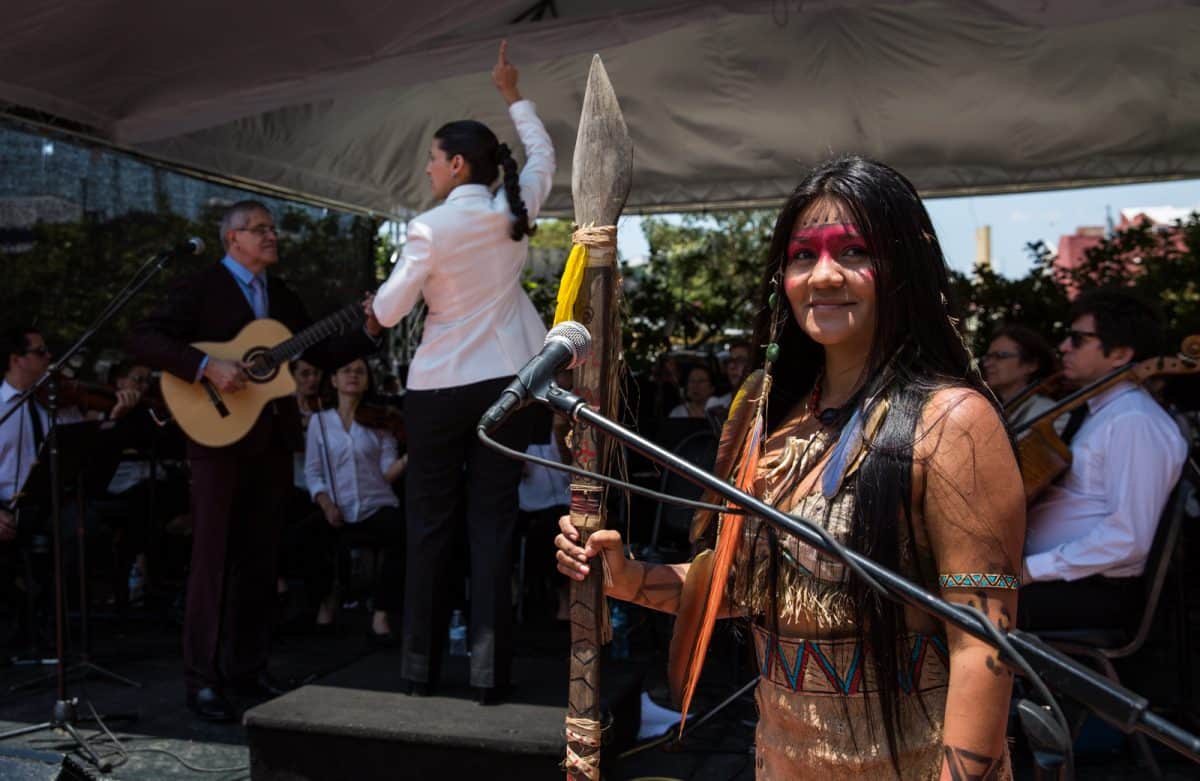Lilidia Quirós teaches her two daughters to feel proud of being Maleku, an indigenous community in northern Costa Rica that strives to preserve its traditions while competing with adventure tourism to attract visitors. Dressed in her ancestral outfit made of layers of bark and fiber from the mastate tree, she dances to the rhythm of drums and other native instruments in her rustic palm-leaf home. Her daughters, ages 4 and 13, mimic her steps.
“I explain to them (…) not to be ashamed of their culture because it is a privilege. Despite being so few, we still maintain our language and traditions,” says this 34-year-old woman in Villa Maleku. At the foot of the Arenal Volcano, near La Fortuna, 170 km north of San José, the community resists being overtaken by the tourism boom in this area known for its hot springs, lush forests, and rich biodiversity. The Maleku are the smallest—numbering less than a thousand—of Costa Rica’s eight indigenous groups, which represent 2.4% of the country’s 5.2 million inhabitants, according to official data.
Villa Maleku, located in an ecological park created eight years ago, is home to around 30 families who participate in a project to revive indigenous culture by combining agriculture with tourism services.
Cultural Heritage and Tourism
In a country that attracted 2.4 million tourists in 2023 with its paradise-like beaches and rich biodiversity, the Maleku community seeks, in its own way, to contend with mass tourism often controlled by foreign entrepreneurs who displace local business owners.
With the help of tour guides who translate into English, Quirós and other community members explain their ethnic customs and traditions to visitors, even teaching them a few phrases in the Maleku language. “One of the traditions we maintain is that we bury our deceased family members inside the house because the soul or spirit remains with us,” Quirós explains.
The tourists are drawn to learning about funeral rituals, medicinal plant secrets, or eating fish cooked in leaves, as well as the colorful wooden masks shaped like jaguars, tigers, butterflies, toucans, frogs, or owls, which they purchase as crafts. “We always tell them to take away this small message: hopefully, they return soon and if they enjoyed it, let their family and friends know,” adds Quirós.
Local Development and Challenges
Not far from the Maleku community, there is a cable car where tourists enjoy passing through the treetops and mountains, which are often shrouded in clouds. And in the village of San Vicente, there are hostels and restaurants, all part of rural tourism circuits.
Cristian Rodríguez owns one of the five restaurants in the area, which is supplied with products from his “agrotourism farm,” such as cow’s milk, trout, pigs, and chickens. “We have a very broad menu with all kinds of foods, meats, rice, a little bit of everything to cater to different tastes,” says this 45-year-old entrepreneur.
Rodríguez has been working in San Vicente for 23 years and, although he is not Maleku, he wants the area to be developed by locals and not by foreigners. It is necessary “to protect the local [inhabitants]” so that “other investors don’t buy up the land.”
“I have seen places where today the businesses started by the locals are now in the hands of foreigners […]. I came here to the community to try to explain to people that we shouldn’t make the same mistake,” he says.






